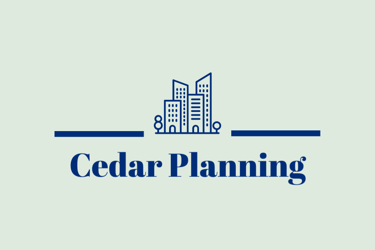Upwards Extension for Homeowners - The Only Way Is Up
An often overlooked permitted development right could allow you to add additional storeys to your home.
9/23/20253 min read


New Permitted Development Rights now offer homeowners an exciting opportunity to add additional storeys to their homes. If you find yourself short of space and are looking for alternatives to extensions or loft conversions, an upwards extension could be the perfect solution.
Traditionally, when homeowners needed more space, they would either extend their property horizontally or convert their loft. However, these options are not always feasible due to limited land or planning restrictions. With the new Permitted Development Rights, homeowners can now explore the possibility of extending upwards without the need for planning permission.
Benefits of Upwards Extensions
Upwards extensions offer several advantages over traditional methods of expanding your home. Here are some key benefits:
Maximising Space - you can add some much needed extra space to your home.
Preserving Outdoor Space - unlike rear or side extensions, upwards extensions will lose you that much valued garden space.
No restricted headroom - loft conversions are a great way to add space and value to your home, however they do have their limits, as they often come with limited head room and less useable space. Upwards extensions can avoid these headaches.
What is Class AA Permitted Development Rights?
Traditionally, homeowners would have needed to apply for full planning permission to add extra storeys to their homes. With the introduction of Class AA this has now changed!
With Class AA in certain circumstances you can add up to two additional storeys where the existing house has two or more storeys, or one additional storey where the property is a bungalow. So your two storey house could become a four storey house, or your bungalow could become a two storey house.
Importantly, this Permitted Development Right needs Prior Approval from the Council, so do not jump ahead and start work without the relevant permissions.
What restrictions apply?
There are a number of limitations and restrictions that apply.
Firstly, the building cannot have been converted to residential uses by using one of the Change of Use Permitted Development Rights (such as Class MA - see more here). To apply the building would need to have been built between July 1948 and 28th October 2018.
If the building is in a protected area, known as Article 2(3) land, which includes conservation areas, Areas of Outstanding Natural Beauty, the Broads, a National Park, World Heritage Site or a SSSI, then you cannot use Class AA.
The additional storey will need to be built on top of the 'principal' part of the dwellinghouse. So this means you cannot add an additional storey on top of a later extension or garage.
The rights do not apply to blocks of flats, or where a building has been split into flats. It also doesn't apply to houses that have already had an additional storey added to them.
You will also need to think about the design and materials used for the additional storey. The external materials need to be similar, and you cannot add a window in any side wall or side roof slope.
How high can I go?
The following restrictions apply:
The highest part of the roof (after extension) cannot exceed 18 metres.
You can increase the highest part of the roof by the following (when measured against the highest part of the existing roof)
For bungalows - 3.5 metres;
For two-storey plus - 7 metres.
But, semi-detached or terraced houses are limited to increases of 3.5 metres of their neighbours.
The floor to ceiling height of additional storeys cannot be exceed the lower of 3 metres or the floor to ceiling height of the existing house.
Conditions
Before starting work you will need to apply to your local Council for Prior Approval. They will assess the proposal against the following criteria:
Amenity of neighbours (overlooking, loss of light etc.)
The external appearance of the dwelling
Any air traffic or defence asset impacts
If the development would impact on a protected view (as set out in the Directions Relating to Protected Vistas issued by the Secretary of State)
After the works the house can only be used as a house - which rules out options such as conversions to a House of Multiple Occupation (HMO) for example.
Beware of Article 4
Article 4 directions can block upwards extensions, and you will also need to be wary of any planning conditions that remove Permitted Development Rights.
Other options
The Government updated the National Planning Policy Framework (NPPF) in December 2023 to strongly encourage the use of mansard extensions to suitable properties.
Conclusion
New Permitted Development Rights offer homeowners an exciting opportunity to explore upwards extensions as a viable alternative to traditional methods of home expansion. With the potential to maximise space, save costs, preserve outdoor areas, and increase property value, an upwards extension can be a compelling option for those in need of additional living space. However, Prior Approval is required and you will need to comply with the relevant regulations and conditions.
Contacts
Email: info@cedarplanning.co.uk
Phone: 07418 610156
Office (by appointment only) Cedar Planning Ltd, 82a James Carter Road, Mildenhall, Bury St Edmunds, IP28 7DE


Click the above button for a free Whatsapp consultation

